Inside the Cotswolds craft club
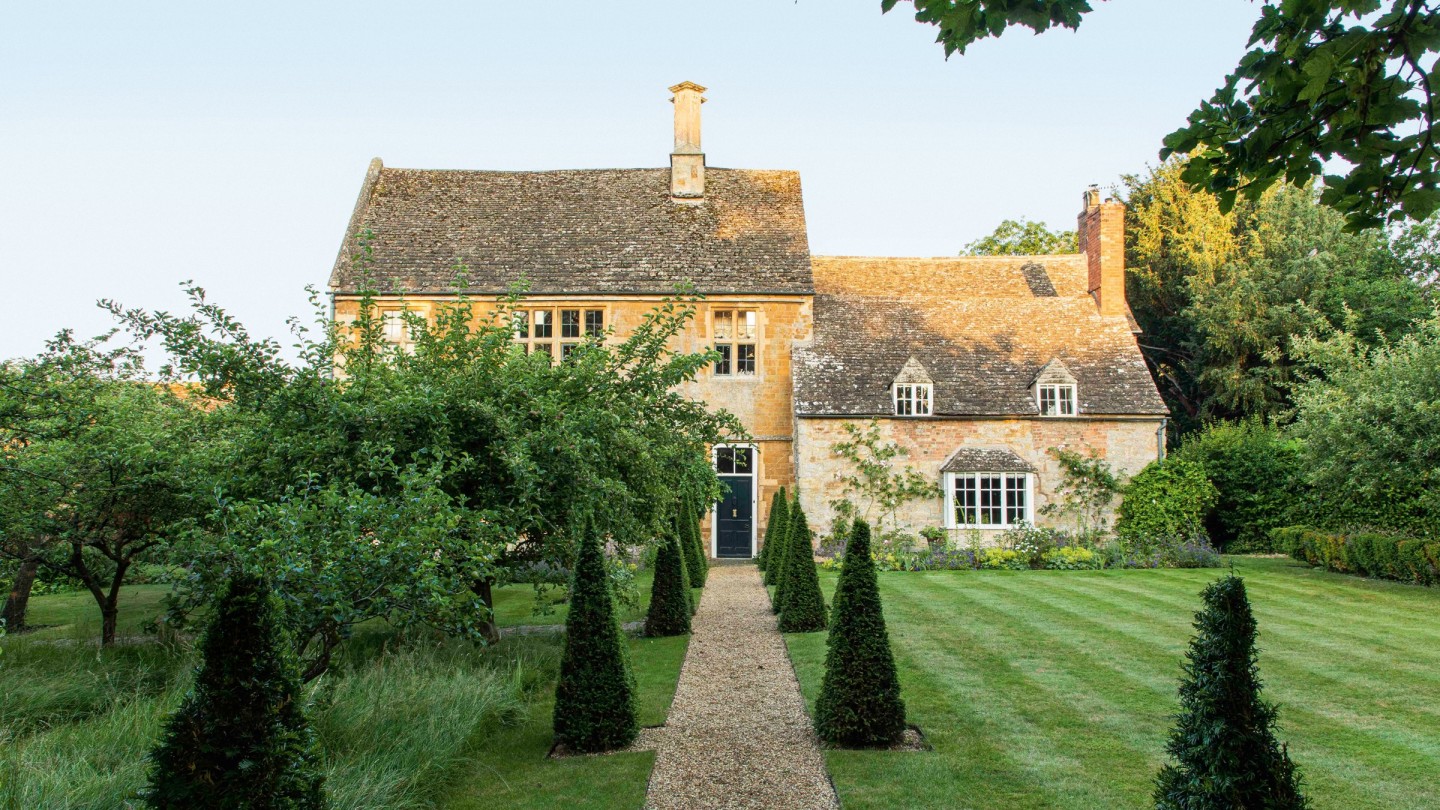
Roula Khalaf, Editor of the FT, selects her favourite stories in this weekly newsletter.
Waiting for a train at London’s Paddington Station, I frantically type emails on my mobile surrounded by the screams of children and deadpan tannoy announcements. Stress level? Stratospheric. Fast forward an hour and a half and I’m soaking up the sun at The King’s Head Inn in Bledington, a centre of Cotswolds life on a village green fringed by slate- and thatched-roofed cottages. A sign at the entrance of this 16th-century haven reads: “Dogs on the lead, Bantams on the loose.” Stress level? Forgotten. It is this mix – the easy commute, countryside you could set an Elgar concerto to and picture-postcard villages – that has made this Gloucestershire enclave a honeypot for holidaymakers and house buyers. But it’s the area’s thriving design community that has this time drawn me here.
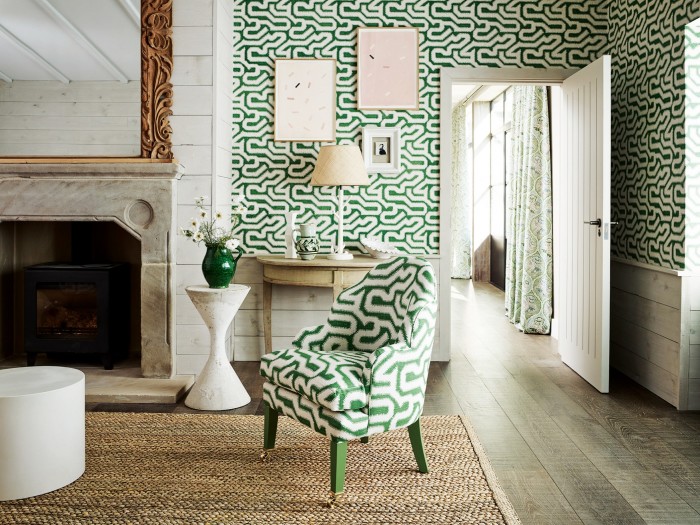
Perhaps it’s a by-product of slow living but everyone in the Cotswolds appears to be channelling a creative talent. Nicola Orr-Ewing runs The King’s Head with husband Archie, in tandem with The Swan Inn in nearby Swinbrook. The Swan is owned by the Chatsworth estate, former home of the late Deborah Mitford, Duchess of Devonshire. Orr-Ewing oversaw the interior renovations at the Inn, but is also a milliner working under the name Nicola de Selincourt. Recognising her hats, I’m told, is a spectator sport at Royal Ascot and Cheltenham.
Designer Amy Kent has lived in the area for almost 30 years, having founded her handmade rug company following a life-changing trip to India. “I was just 27 when we moved to the Cotswolds from London, but setting up here made more financial sense,” she says. “Much of my work involves going into people’s houses and creating something unique for them.”
There’s a real sense of entrepreneurial zeal. In the past 10 years Kent has observed considerable growth in creative businesses among the 30 to 40 age group. “Most haven’t bothered doing the expected thing of going to London for a career – they don’t feel the need,” she says. She points to her sister Lucy, a talented local painter, as a typical example.
Cotswold craft pioneers Jim and Dominique Keeling set up Whichford Pottery in 1976 in what was then little more than a field near Shipston-on-Stour. Today their garden, bursting with blooms amid an army of pots, is worth the visit alone. Keeling’s son Adam, a master thrower, now runs the operation with his sister Theodora, and is happy to lead the demonstrations as to how the biggest pots are thrown (the largest ever produced a ginormous 109cm high x 157cm wide): it’s a combination of brute strength and age-old skills, honed from the age of seven. Keeling’s eldest daughter Maia, meanwhile, runs the pottery’s Straw Kitchen, which serves locally grown seasonal food.
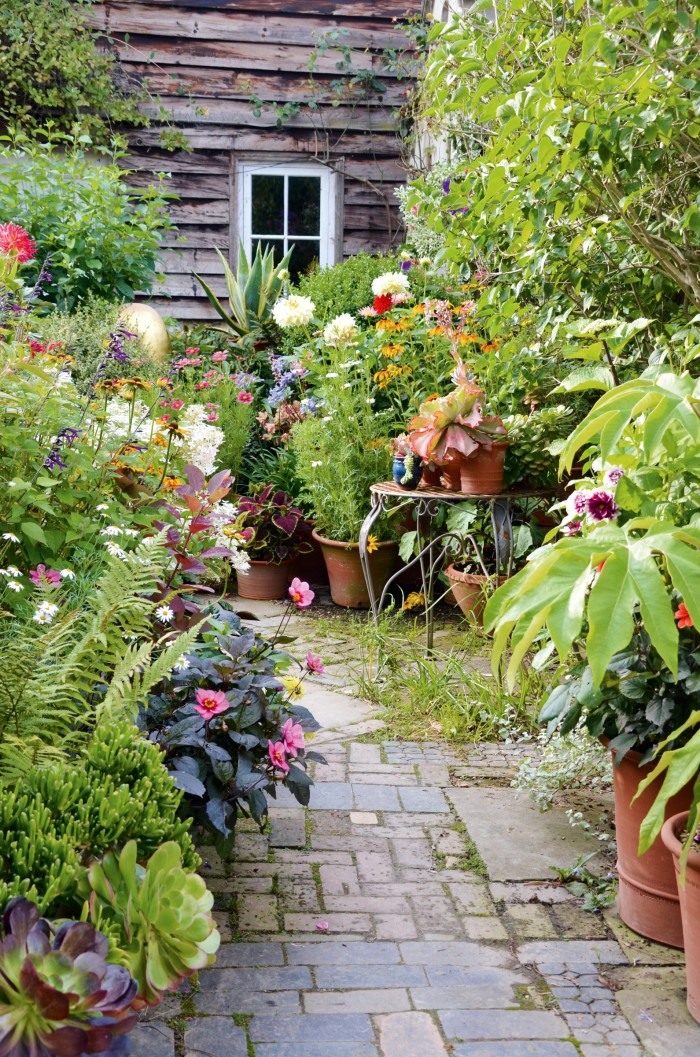
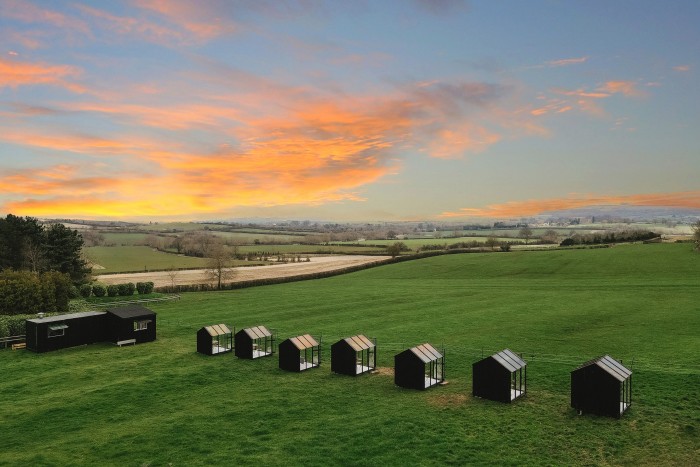
Dinner is served within a series of glasshouses in the Cotswold Hills courtesy of The Scenic Supper; the idea of three local school friends Toby Baggott, Sam Lawson-King and Scott Sullivan. The dinners offer seasonal soul food, handmade gin that’ll knock your socks off and a view straight out of a John Singer Sargent painting – a reminder that this is an Area of Outstanding Natural Beauty, and one that is currently being considered for National Park status.
Here, I meet Kent’s sister, painter Lucy, who remarks on the light sweeping across the fields as she takes her seat next to architect Christian Fleming. One of her own en plein air landscapes created with layers of paint will be auctioned this November for the Art for Charity Collective. Also at the table is Australian interior designer Lisa Burdus, who arrived in the Cotswolds to establish a UK arm of her successful Sydney and NSW businesses; her rental home in nearby Churchill reflects her take on classic style.
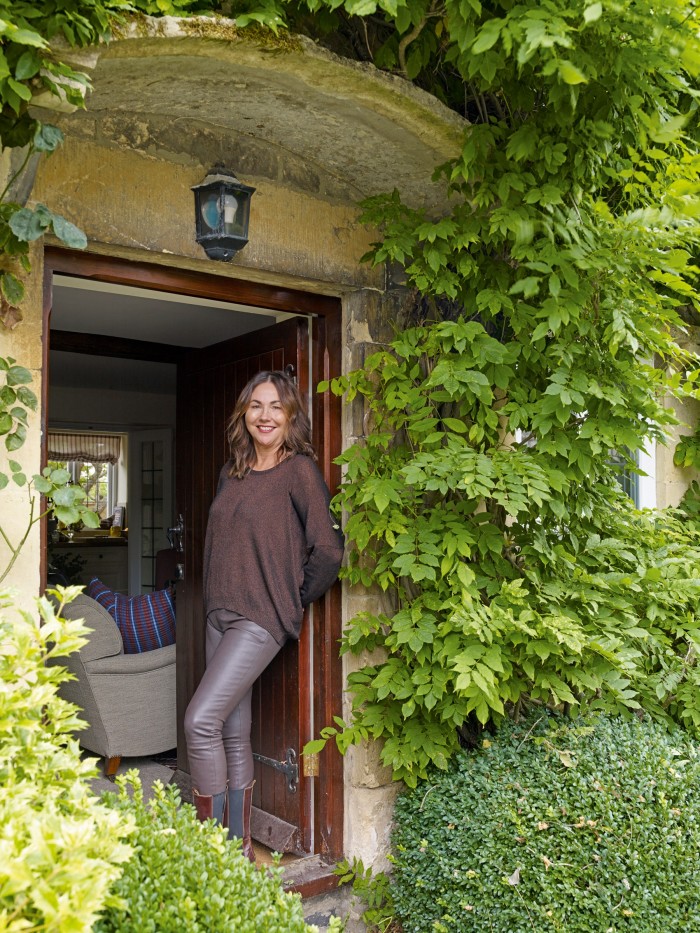
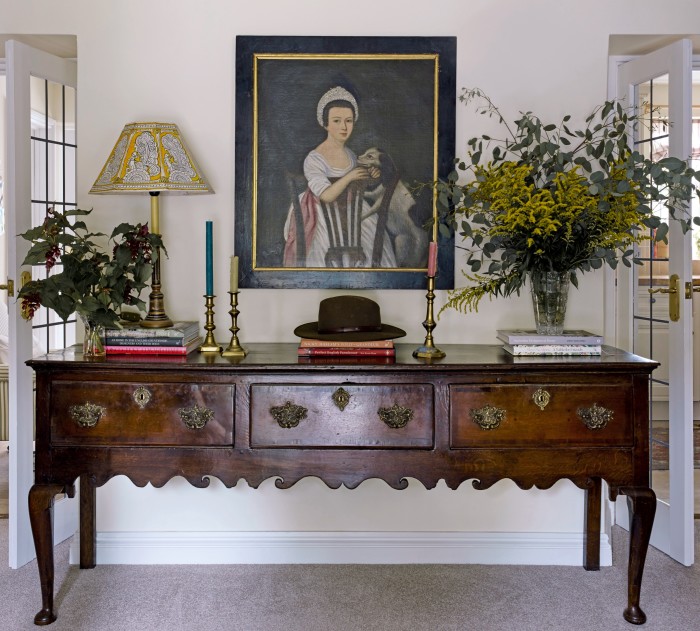
Local property buying agent Harry Gladwin of The Buying Solution identifies the area’s golden corridor as “the line between Stow-on-the-Wold, Burford, Woodstock, Great Tew and Chipping Norton”, which he takes me to see by air with pilot Simon Clark, who runs a helicopter hire service for the area’s wealthy residents. “Prices for prime properties have increased, in some cases by more than 30 per cent since the start of 2020.” Fleming, who grew up in the area, observes how the new money has brought societal changes. “My parents’ generation were a melting pot of farmers and the hunting set, who spent money on horses and prioritised the boot room and laundry. It was basically old money, which means no money,” he laughs. “Those moving here now have huge budgets.”
In particular, he notes, the property boom has heralded a new breed of interior designer “wafting past in a drizzle of Chanel”. Likewise, the dominant styles have a distinctly metropolitan flavour. Much of the work undertaken by Fleming’s practice, however, is new-builds conceived in a traditional style. “You have to consider what your ancestors show you,” he says of his love of old houses – but each must pass what he calls the American tourist test: “Will they walk by and say, ‘Wow’?”
He recently teamed up with interior architect Ben Pentreath on a client’s home in nearby Oxfordshire (“She has a growing family and wanted an entertaining space,” he says). He has also completed a house with a strawberry gothic-style façade for an American owner. “Not a massive project, about £2m,” he adds, before checking himself in horror. “Gosh, that sounds terrible, doesn’t it? But that really is a smaller one for us.” He’s also branching out into interiors. “I love those old stone floors and floorboards, and we’re working with some amazing craftsmen to make beautiful things with old-fashioned techniques.”
Break the mould: five minutes with figurative sculptor David Williams Ellis
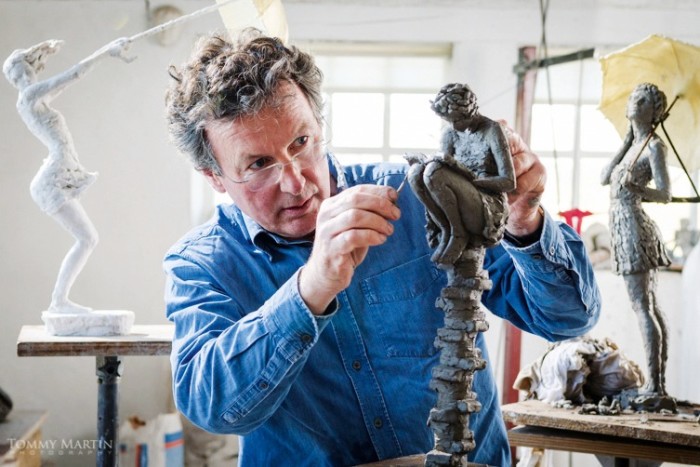
Tell me about your studio in the Cotswolds.
It’s all about the light. I can adjust it as I’m moving my pieces around, and according to the weather. The thing about sculpture, it’s not just about the classic north light, which is fantastic, but you’re looking into the shadows a lot; you need depth, which means having different lights coming in. That’s all possible here.
Your sculptures, some colossal, are made to take moulds and then destroyed?
Yes, they are destroyed. They’re formed here in the studio and the mould makers come from the foundry and make their moulds. I’ve just finished a giant ram’s head [destined for a private house] that needed a 40-piece mould, and then the rest was salvaged or skipped. It’s a nerve-racking process.
How do you begin designing a piece?
The most difficult thing is the idea. I like to train like a classical musician perfecting their work every day, so when you have those magical moments you are fully able to exploit them. I produce a small-scale maquette, about 30cm high x 30cm wide, then work out how I’m going to make it on a big scale, which involves a lot of steel and visual engineering.
Is it true that a ram in a nearby field recently became your life model?
Yes, Tommy, and I also bought a ram’s head on eBay, and the guy selling it had named it Bobby. One was alive and the other dead! So when I got stuck on how something worked on my sculpture I would go to the field and study.
Tell us about the sculpture you created for the anniversary of the D-Day Landings.
I was approached by Liam O’Connor, the appointed architect of the memorial and I instantly said yes. My father wasn’t at the landing but was commanding a nearby torpedo boat, aged just 21, which brought supplies in a few days later. All his contemporaries had stories of that time, and all were unbelievably young. I felt that I needed to step up as these people had given so much. I wanted a feeling of cooperation, comradeship and endeavour and all that needed movement and tension. It seems to have meant so much to so many people. I’ve never had a response to a work like it before.
The preservation of artisanal skills has excited much of the Cotswolds. I try gilding with Sean Phelan, who learnt his craft as an apprentice in Fulham. He now does bespoke work that includes gilding inlays on furniture – or anything the client may want. He, too, is expanding, having produced a collection of convex mirrors in coloured glass (from £995), and a line of furniture.
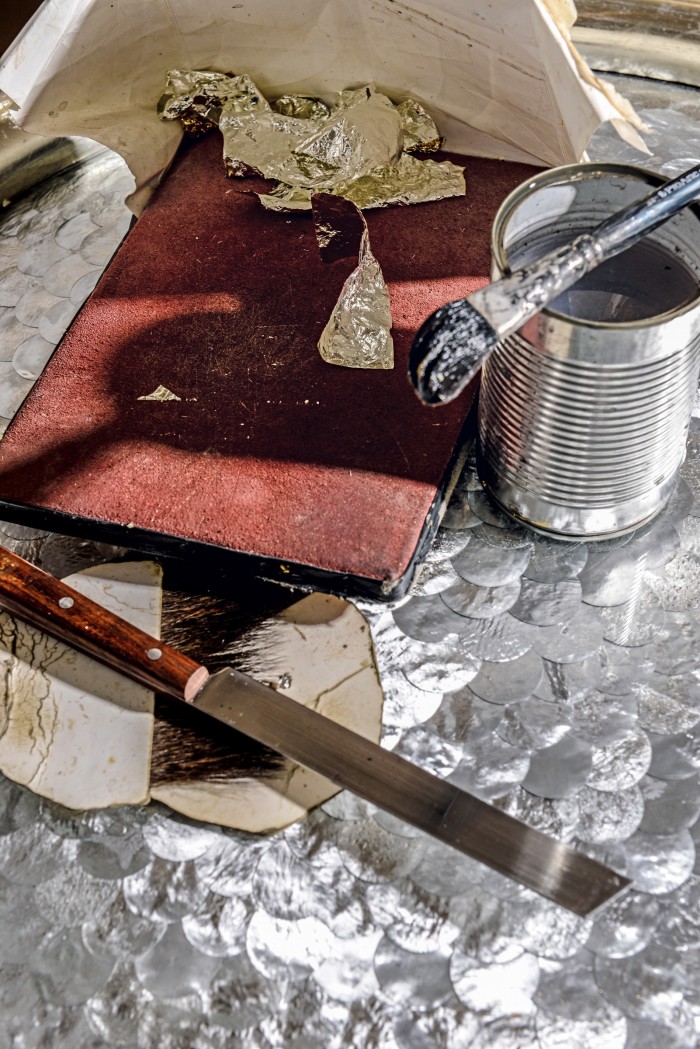
There are small enterprises of interest in every nook, from jewellery brand Memara – conceived on a cycle through Rajasthan by Abby Kaye (ear cuffs from £10) – to fabric and wallpaper makers Rapture & Wright, established in 2004 by trained illustrator Peter Thwaites and graphic designer Rebecca Aird (£26 a metre). Watching them work with giant screen blocks is mesmerising, and their approach to sustainability is admirable; their waste dyes are “eaten” by plants in living ponds round behind the studio in Evenlode, near Moreton-in-Marsh.
This eco ethos is shared by many well known Cotswolds companies, including Daylesford, the bastion of organic British food and a yummy-mummy hangout. A must-do here is the one-day-only tour of Lady Bamford’s formal walled garden (which this year opened on 23 June) – a feast for the eyes and a rare insight into the making of its products. Equally enchanting are the vegetable gardens and meadows at Thyme in Southrop, the hotel, restaurant and spa destination founded by Caryn Hibbert. Originally a cookery school, it’s an epicurean haven – and a shopping trove. I spot a series of paintings of flowers on Hibbert’s dining table, the exact designs, I later realise, that feature in her latest collection of linens (£260 for a tablecloth) and silkwear created for Thyme’s sister brand Bertioli. A new Bertioli beauty collection will also launch this autumn.
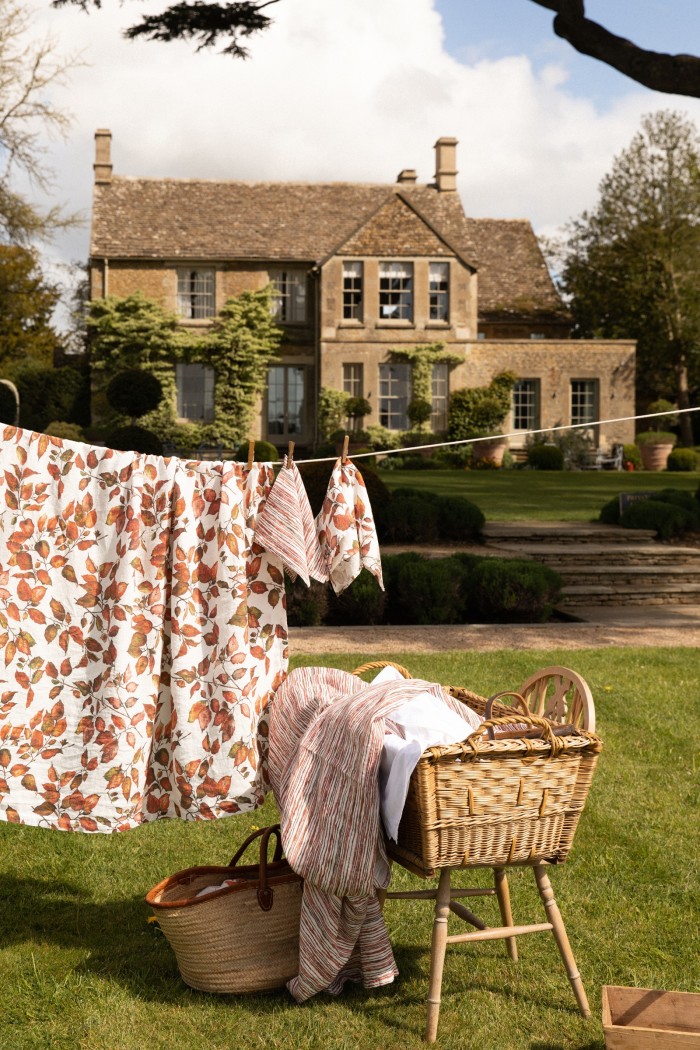
Where else? Stow’s Cutter Brooks is the established go-to for artisanal staples, as is Chipping Norton’s C’est Tout, but I head to a new hub at Alex James’s Churchill Heath Farm in Kingham where it’s rumoured that the likes of Luke Edward Hall have plans to establish a base. Here, Hadeda, founded by Kate Kindersley who grew up in Africa, offers homewares made by artisans and co-ops from the continent. As I leave there is a major incident. People run past me waving their hands in the air. The commotion? A sheep has escaped the field. Last seen bolting for the highway.
WHERE TO STAY
For a country inn experience: The King’s Head Inn, Bledington
A characterful country pub where you’ll be in the thick of village life. It scooped the UK Pub of the Year in 2018 and was last year named County Dining Pub of the Year for Gloucestershire by The Good Pub Guide. From £110 for a double room
For luxury self-catering: Oxseven, Bledington
Two quintessential country residences overlooking the village green. The Village Barn sleeps up to four people and the former 19th-century village farmhouse up to nine (and can be booked for long-term stays). Check out the hand-designed wallpapers and furniture creating a modern yet cosy ambience. Three-night minimum stays in the Village Barn, from £380
For Airbnb country chic: Squirrel Cottage, Kingham
A three-bedroom, Grade II-listed, thatched cottage on the village green in Kingham. From £345; book via Instagram or Airbnb
WHERE TO EAT
The brunch and lunch hangout: Quince and Clover at Great Tew
The salads, sourdoughs and pastries are sensational, and served within a charming honey-stoned cottage topped by a thatched roof.
The dining pub of the year: The Swan Inn, Swinbrook
The Swan was voted Oxfordshire dining pub of the year in 2020 and 2021 by The Good Pub Guide. The hotel inn, which also has two AA rosettes, sources local ingredients such as Swinbrook beef and Cotswolds cheese.
The impossible-to-book hotspot: The Wild Rabbit in Kingham
An 18th-century inn transformed by the Bamfords (the family behind Daylesford) into a hotel and dining destination serving seasonal cuisine with modern twists.
The Americans do the Cotswolds deli: D’Ambrosi Fine Foods, Stow-on-the-Wold
Former New York chef Andrew d’Ambrosi and his wife Jesse elevate takeaway with their gourmet menu ranging from lobster to healthy kale salads.
The fork-to-plate go-to: The Ox Barn, Thyme
This cuisine, conjured from ingredients grown in the gardens and grounds, is simple, innovative cooking at its best.
The locals’ favourite: The Straw Kitchen, Whichford Pottery
Most locals direct you here for the ramen, fresh seasonal fare, and a mean bacon sandwich.
The field trip: The Scenic Supper, Moreton-in-Marsh
Dine in a bespoke glasshouse amid the rolling Cotswold Hills. The venue will move to a barn for the winter months.
The local treats pitstop: Yarnton Home & Garden
It might be an everyday garden centre but this place has big ambitions, sourcing local producers such as ethical NewGround coffee and liqueurs from Burford-based Gibson’s, via homewares and beauty brands such as Bao.
Comments